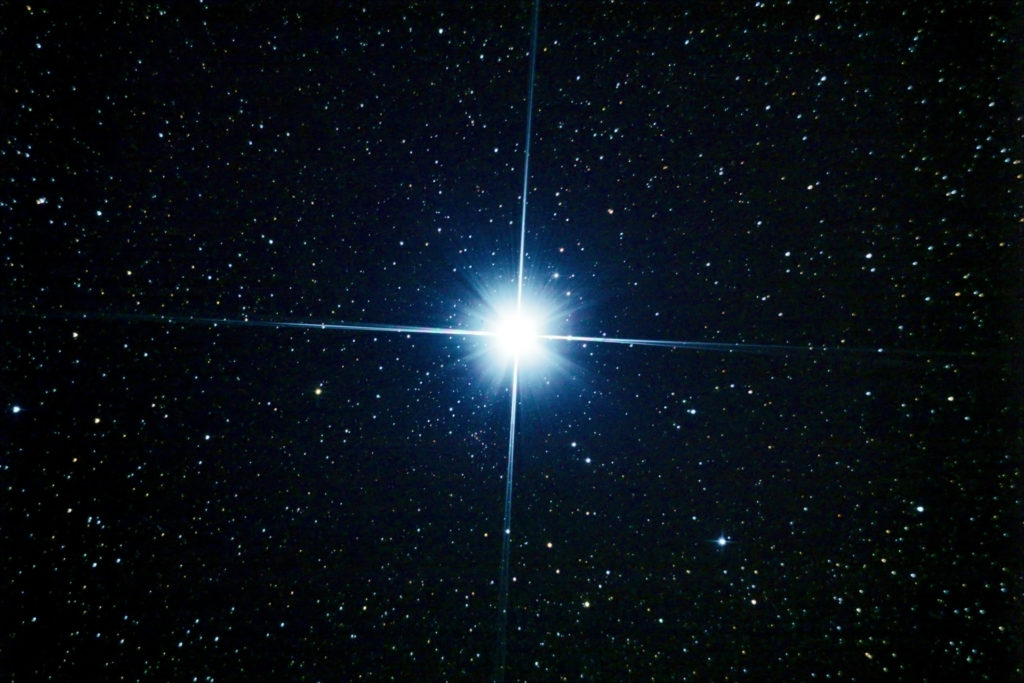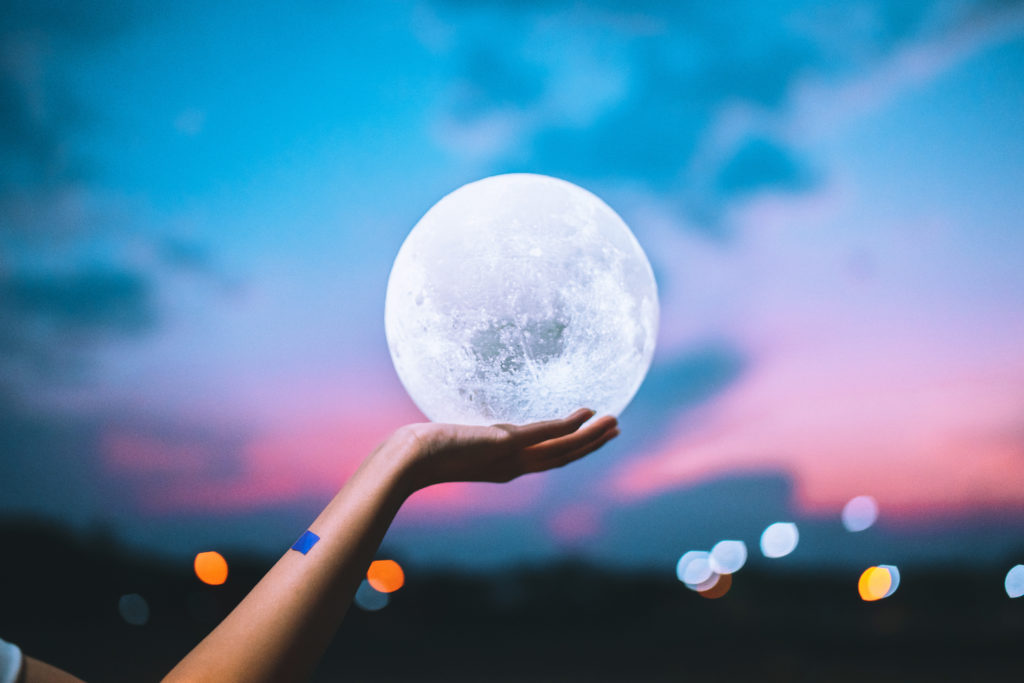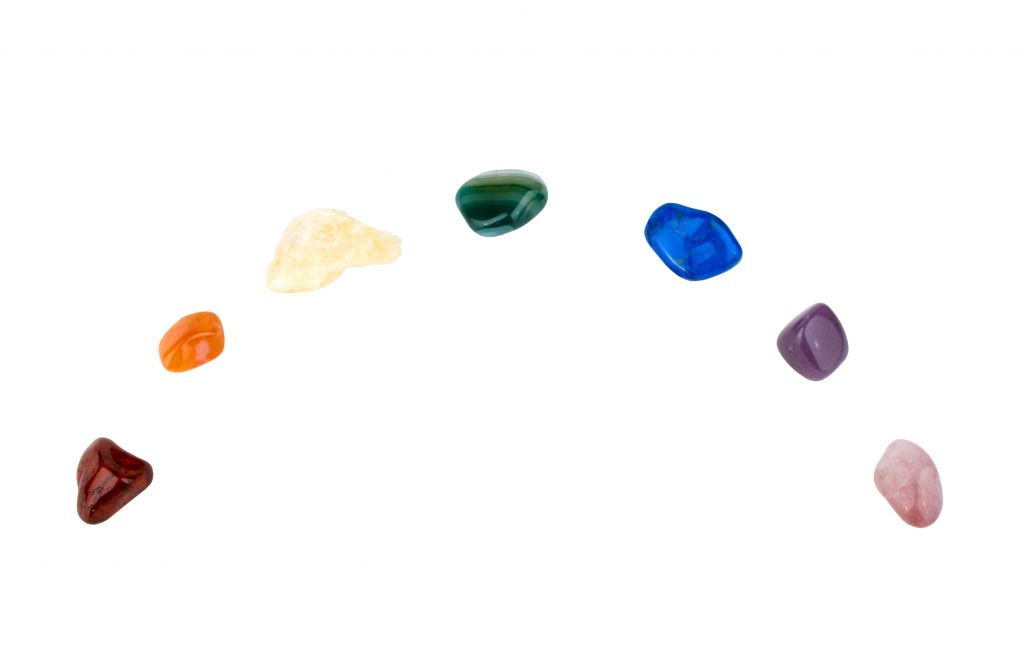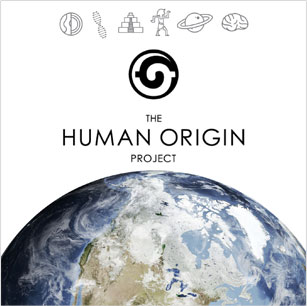The full moon cycle is a measure of the moon phases. It’s counted from when the new moon appears, grows to the full moon returns to the new moon again. The Lunar Calendar tracks the process from its beginning, starting with the new moon. You can also measure it from full moon to full moon.
We observe the moon phases from the earth due to sunlight hitting the moon surface. The relation between the earth moon and sun, create the lunar cycle.
At the same time, the moon revolves around the earth. Each body has a position relative to each other. When the earth faces the sun, it’s day time. Similarly, when we look at the moon, we see the sun’s light on the moon surface.
The full moon cycle completes when the side of the moon we see is entirely lit by sunlight.
For quick reference, here’s a list of names and dates of Full Moons in 2019.
NASA 2019 Full Moon Cycle
| Date | Name | U.S. East | UTC |
| Jan. 21 | Wolf Moon | 12:16 a.m. | 04:16 |
| Feb. 19 | Snow Moon | 10:53 a.m. | 15:53 |
| Mar. 20 | Worm Moon | 9:43 p.m. | 01:43 |
| Apr. 19 | Pink Moon | 7:12 a.m. | 11:12 |
| May 18 | Flower Moon | 5:11 p.m. | 21:11 |
| Jun. 17 | Strawberry Moon | 4:31 a.m. | 08:31 |
| Jul. 16 | Buck Moon | 5:38 p.m. | 21:38 |
| Aug. 15 | Sturgeon Moon | 8:29 a.m. | 12:29 |
| Sep. 14 | Harvest Moon | 12:33 a.m. | 04:33 |
| Oct. 13 | Hunter’s Moon | 5:08 p.m. | 21:08 |
| Nov. 12 | Beaver Moon | 8:34 a.m. | 13:34 |
| Dec. 12 | Cold Moon | 12:12 a.m. | 05:12 |
How often does a full moon happen?
The full moon happens roughly every 29.53 days.
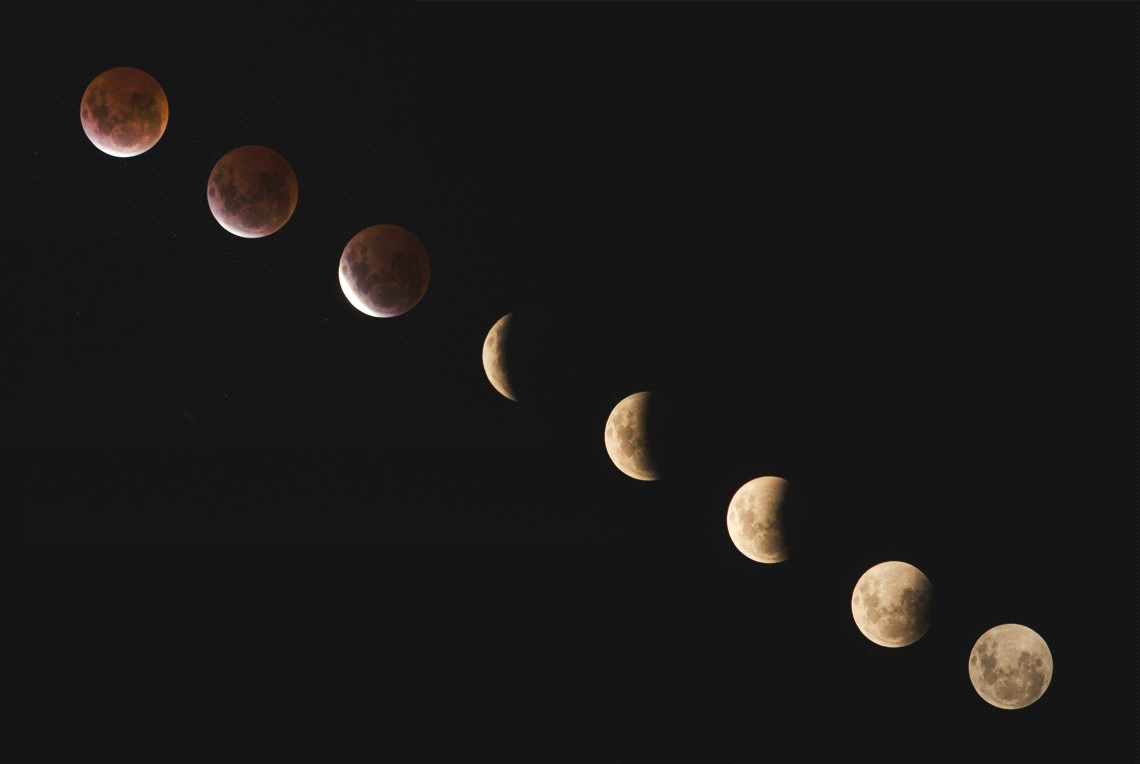
The full moon cycle as it moves from full, to crescent, gibbous, and to new moon.
Is there a full moon at the end of every month?
Our calendar doesn’t necessarily have a full moon at the end. It falls in varying periods between months.
According to NASA, in 2019, every month has a full moon. However, not all years are like this.
The full moon is when the moon sits on the exact other side of the earth and sun. That means the earth is in between the moon and sun.

How the full moon cycle fits into the months of the Gregorian calendar.
The moon revolves around the earth roughly every 29.53 days. That means once a month, there should be a full moon. As the Gregorian Calendar is a solar calendar, it doesn’t record the moon cycles. That means our months can misalign with the full moon cycle.
It separates months into 30, 31, (and 28 for February) days. These don’t line up to the period of the full moon cycle.
In 2018, full moons were later in the months. In 2019, the full moons will cycle earlier in the months. At the end of the year the full moon happens on the 12th of December 2019.
Sometimes a month will have no full moons, and others will have two.
What is a month without a full moon called?
Rarely a month falls without a full moon. On the Gregorian Calendar, it can occur only in February. It happens about every 19 years.
A month without a full moon is called a black moon.
How often is there a full moon twice in one month?
When February is without a full moon, the preceding January or December and the following March or April have two full moons.
A month with two moons is called a blue moon.
The blue moon occurs every 2.5 years according to NASA.
What are the names of the full moons?
In Western Culture we have attached specific names to full moons.
Black moon is a month with no moon. Blue moon is a month with two.
However, the Lunar Calendar used in many ancient societies. Many cultures have distinct names to each full moon cycle. The names were applied to the entire month in which the full moon falls.
The Farmer’s Almanac lists several names that are commonly used in the United States.
Here is a list of full moons names used across certain ancient cultures.
| Colonial American | |||
| January: | Winter Moon | July: | Summer Moon |
| February: | Trapper’s Moon | August: | Dog Day’s Moon |
| March: | Fish Moon | September: | Harvest Moon |
| April: | Planter’s Moon | October: | Hunter’s Moon |
| May: | Milk Moon | November: | Beaver Moon |
| June: | Rose Moon | December: | Christmas Moon |
| Chinese | |||
| January: | Holiday Moon | July: | Hungry Ghost Moon |
| February: | Budding Moon | August: | Harvest Moon |
| March: | Sleepy Moon | September: | Chrysanthemum Moon |
| April: | Peony Moon | October: | Kindly Moon |
| May: | Dragon Moon | November: | White Moon |
| June: | Lotus Moon | December: | Bitter Moon |
| American Indian (Cherokee) | |||
| January: | Cold Moon | July: | Ripe Corn Moon |
| February: | Bony Moon | August: | Fruit Moon |
| March: | Windy Moon | September: | Nut Moon |
| April: | Flower Moon | October: | Harvest Moon |
| May: | Planting Moon | November: | Trading Moon |
| June: | Green Corn Moon | December: | Snow Moon |
| American Indian (Choctaw) | |||
| January: | Cooking Moon | July: | Crane Moon |
| February: | Little Famine Moon | August: | Women’s Moon |
| March: | Big Famine Moon | September: | Mulberry Moon |
| April: | Wildcat Moon | October: | Blackberry Moon |
| May: | Panther Moon | November: | Sassafras Moon |
| June: | Windy Moon | December: | Peach Moon |
| American Indian (Dakotah Sioux) | |
| January: | Moon of the Terrible |
| February: | Moon of the Raccoon, Moon When Trees Pop |
| March: | Moon When Eyes Are Sore from Bright Snow |
| April: | Moon When Geese Return in Scattered Formation |
| May: | Moon When Leaves Are Green, Moon To Plant |
| June: | Moon When June Berries Are Ripe |
| July: | Moon of the Middle Summer |
| August: | Moon When All Things Ripen |
| September: | Moon When The Calves Grow Hair |
| October: | Moon When Quilling and Beading is Done |
| November: | Moon When Horns Are Broken Off |
| December: | Twelfth Moon |
| Celtic | |||
| Quite Moon | July: | Moon of Claiming | |
| Moon of Ice | August: | Dispute Moon | |
| Moon of Winds | September: | Singing Moon | |
| Growing Moon | October: | Harvest Moon | |
| Bright Moon | November: | Dark Moon | |
| Moon of Horses | December: | Cold Moon | |
| English Medieval | |||
| January: | Wolf Moon | July: | Mead Moon |
| February: | Storm Moon | August: | Corn Moon |
| March: | Chaste Moon | September: | Barley Moon |
| April: | Seed Moon | October: | Blood Moon |
| May: | Hare Moon | November: | Snow Moon |
| June: | Dyan Moon | December: | Oak Moon |
| Neo-Pagan | |||
| January: | Ice Moon | July: | Rose Moon |
| February: | Snow Moon | August: | Lightening Moon |
| March: | Death Moon | September: | Harvest Moon |
| April: | Awakening Moon | October: | Blood Moon |
| May: | Grass Moon | November: | Tree Moon |
| June: | Planting Moon | December: | Long Night Moon |
| New Guinea | |||
| Name: | Rainbow Fish Moon | Name: | Black Trevally Moon |
| Name: | Parrotfish Moon | Name: | Open Sea Moon |
| Name: | Palolo Worm Moon | Name: | Tiger Shark Moon |
| Name: | Flying Fish Moon | Name: | Rain & Wind Moon |
Conclusion
The Lunar Calendar has been measured for many years by our ancestors. Today you can follow it by knowing the full moon cycle.
You need to remember that our Gregorian Calendar does not line up with lunar phases.
To get a full understanding read more here.
How do you use the full moon in your every-day life?
Leave your questions and thoughts in the comment section below.


 The full moon appears once a month on different days. The full moon cycle tells us what day the full moon will appear.
The full moon appears once a month on different days. The full moon cycle tells us what day the full moon will appear. 
